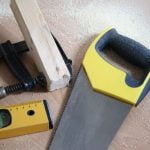How hard to get home improvement loan? Home improvement loans play a crucial role in helping homeowners finance renovations, repairs, and upgrades to their properties. Whether it’s a major renovation project or a minor repair, accessing the necessary funds can be challenging for many individuals. From understanding the significance of these loans to exploring eligibility criteria and different types of loans available, this article will provide valuable insights into the world of home improvement financing.
For many homeowners, the decision to pursue a home improvement loan stems from the need to maintain and enhance their property. The ability to access affordable financing options can make a significant difference in turning their home improvement dreams into reality. Additionally, home improvement projects can increase property value and improve quality of life, making these loans an attractive option for homeowners looking to invest in their homes.
In this section, we’ll delve into why people often seek out home improvement loans and discuss the benefits that come with securing the necessary funds for improving their homes. Understanding these factors is essential for individuals considering embarking on a home improvement project and seeking financial assistance.
Eligibility Criteria for Home Improvement Loans
When considering applying for a home improvement loan, it is essential to understand the eligibility criteria that lenders typically consider. One of the most important factors that lenders look at is the borrower’s credit score. A higher credit score demonstrates a borrower’s creditworthiness and their ability to manage debt responsibly. Most lenders prefer a credit score of at least 620, although some may require an even higher score for certain types of loans.
In addition to credit score, lenders also consider the borrower’s income and employment history. A steady source of income is crucial in demonstrating the ability to repay the loan. Lenders often require proof of income, such as pay stubs or tax returns, as part of the application process. Self-employed individuals may need to provide additional documentation to verify their income.
Furthermore, lenders may also evaluate the borrower’s existing debt and financial obligations when determining eligibility for a home improvement loan. This is usually done by calculating the debt-to-income ratio, which compares the borrower’s monthly debt payments to their gross monthly income. A lower debt-to-income ratio indicates less financial strain and may improve the chances of loan approval.
It’s important to understand how hard it is to get a home improvement loan since there are specific requirements you must meet like demonstrating financial stability through your credit score and proving your ability to repay through steady income. By being aware of these eligibility criteria, potential borrowers can take proactive steps toward strengthening their financial profile before applying for a home improvement loan.
| Eligibility Factors | Description |
|---|---|
| Credit Score | Higher credit scores are preferable; around 620 or higher |
| Income Verification | Lenders require proof of steady income and employment history |
| Debt-to-Income Ratio | Lenders evaluate existing debt and financial obligations through this ratio |
Types of Home Improvement Loans
Personal loans are a popular option for financing home improvement projects. These unsecured loans can be obtained from banks, credit unions, or online lenders. One of the main advantages of personal loans is that they do not require collateral, making them a relatively low-risk option for borrowers. Additionally, personal loans typically have fixed interest rates and repayment terms, allowing borrowers to budget effectively for their home improvement expenses.
Home Equity Loans
Home equity loans involve borrowing against the equity in your home, which is determined by the difference between the fair market value of your property and the outstanding balance on your mortgage. This type of loan often comes with lower interest rates than personal loans because it is secured by the value of the borrower’s home.
However, failing to repay a home equity loan could result in foreclosure, making it vital for borrowers to carefully consider their ability to make timely payments before taking out this type of loan.
Home Equity Lines of Credit (HELOC)
A HELOC operates similarly to a credit card in that it allows homeowners to borrow against their home equity as needed rather than receiving a lump sum upfront. This flexibility makes HELOCs an appealing choice for individuals with ongoing or long-term home improvement projects.
Like home equity loans, HELOCs use the borrower’s property as collateral and usually offer lower interest rates compared to other types of financing. Borrowers should be aware that variable interest rates may apply, meaning monthly payments could fluctuate over time.
Understanding the various types of home improvement loans available can help individuals make informed decisions about their financing options. By exploring these options and weighing their benefits and drawbacks, applicants can determine which type of loan best suits their specific needs and financial circumstances when pursuing their home improvement goals.
Tips for Improving Your Chances of Approval
When it comes to home improvement loans, getting approved can sometimes be a challenging process. However, there are several steps that you can take to improve your chances of securing the funding you need for your home renovation projects.
Strengthening Your Credit Score
One of the most important factors that lenders consider when approving a home improvement loan is your credit score. A higher credit score indicates a lower risk for the lender, making it more likely for you to receive approval and favorable terms. To improve your credit score, focus on making timely payments, keeping credit card balances low, and avoiding opening new lines of credit before applying for a home improvement loan.
Reducing Debt-to-Income Ratio
Lenders also look at your debt-to-income ratio when evaluating your eligibility for a home improvement loan. This ratio measures how much of your monthly income goes towards paying off debt. To improve this ratio, consider paying off existing debts or increasing your income through additional sources such as freelancing or part-time work.
Providing Detailed Project Plans
Another way to improve your chances of approval is by providing detailed project plans to potential lenders. This demonstrates that you have a clear vision for how the funds will be used and the improvements that will be made to your property. Additionally, having a structured plan in place shows financial responsibility and increases confidence in your ability to manage the funds effectively.
By taking proactive steps such as these, you can significantly increase your chances of getting approved for a home improvement loan and make progress towards turning your renovation dreams into reality. Understanding what lenders look for and taking action to strengthen those areas can make all the difference in successfully obtaining the financing you need to enhance and upgrade your home.
Finding the Right Lender
When considering a home improvement loan, one of the most crucial steps is finding the right lender. With so many options available, it can be overwhelming to navigate through the multitude of offers and choose the best fit for your individual financial needs. The key is to research and compare different lenders to make an informed decision.
It’s essential to look for a reputable lender with a history of providing favorable terms and excellent customer service. Start by checking with your current bank or credit union, as they may offer specific benefits or loyalty programs for existing customers. Online lenders also provide convenient options for obtaining a home improvement loan, with quick approval processes and competitive rates.
Comparing offers from different lenders is crucial in determining the best loan option. Consider factors such as interest rates, repayment terms, fees, and any special incentives offered by each lender. Additionally, take note of customer reviews and ratings to gauge their reputation and reliability within the industry.
Lastly, don’t forget to inquire about eligibility requirements and whether the lender offers pre-qualification options. This will give you a better understanding of how hard it is to get a home improvement loan from each lender you are considering.
| Factor | Consideration |
|---|---|
| Interest Rates | Compare rates from different lenders |
| Reputation | Check customer reviews and ratings |
| Eligibility Requirements | Inquire about specific criteria for approval |
By carefully evaluating your options and finding the right lender for your home improvement loan, you can ensure that you receive favorable terms and financing that meets your needs. This proactive approach will give you confidence in moving forward with your home improvement projects while securing financing that aligns with your budget and goals.
The Application Process
The process of applying for a home improvement loan may seem daunting, but with the right information and guidance, it can be a seamless experience. Here are some key steps to keep in mind when navigating the application process:
1. Research and Gather Information: Before applying for a home improvement loan, it’s essential to research different lenders and their offerings. Take the time to understand the various types of loans available, interest rates, and repayment terms. This will help you make an informed decision when choosing a lender that best suits your needs.
2. Prepare Required Documents: Lenders typically require specific documents to process your home improvement loan application. These may include income verification, tax returns, bank statements, and details about the renovation project you plan to undertake. Be sure to gather all necessary paperwork beforehand to streamline the application process.
3. Complete the Application: Once you’ve chosen a lender and gathered the required documents, it’s time to complete the application for your home improvement loan. Many lenders offer online applications for convenience, allowing you to submit your information from the comfort of your own home.
4. Await Approval and Funding: After submitting your application, the lender will review your information and determine whether you qualify for a home improvement loan. If approved, funds may be disbursed directly to you or your contractor, depending on the lender’s policies.
5. Communicate with Your Lender: Throughout the application process, it’s important to maintain open communication with your lender. If there are any questions or additional documentation required, be responsive and provide timely updates to ensure a smooth approval process.
Applying for a home improvement loan does not have to be overwhelming if approached systematically and with proper preparation. By understanding what is needed during this process and valuing effective communication with lenders can significantly improve your experience in securing funding for your home renovation projects. With these steps in mind, homeowners can confidently navigate through the application process and make their vision of an upgraded living space a reality.
Challenges and Roadblocks
When it comes to obtaining a home improvement loan, there are several challenges and roadblocks that applicants may face. It’s important to be aware of these potential hurdles in order to navigate the loan application process successfully. Here are some common challenges and solutions for how to overcome them:
1. Credit Score Requirements: Many lenders have strict credit score requirements for home improvement loans. If your credit score is lower than the lender’s minimum requirement, you may have difficulty securing a loan. However, there are steps you can take to improve your credit score, such as paying down existing debt, making on-time payments, and disputing any errors on your credit report.
2. Income Verification: Lenders will also require proof of income to ensure that you have the financial means to repay the loan. If you are self-employed or have irregular income, this can pose a challenge when applying for a loan. In this case, providing additional documentation such as bank statements or tax returns can help strengthen your application.
3. Existing Debt-to-Income Ratio: Another common roadblock is having a high debt-to-income ratio, which indicates that you already have a significant amount of debt relative to your income. Lenders may be hesitant to approve a home improvement loan if they feel that your current level of debt is too high. To improve your chances of approval, consider paying down existing debts before applying for a home improvement loan.
By being proactive and addressing these challenges head-on, you can increase your chances of obtaining a home improvement loan and make your renovation dreams a reality.
– Having low equity in your home: If the value of your home is not sufficient enough for equity collateral against the loan amount desired, it may hinder the approval process.
– Finding the Right Loan Offer: With different options including personal loans and home equity lines of credit available it might be difficult deciding which one works best specifically for each individual’s need/requirements based on repayment terms or repayment interest rates etc.
– Location Specific Obstacles – Some geographical locations tend to have much higher building costs thus banks offering lower Home Improvement Loanable Amounts due their established price limits going up rather than solely establishing LCVR% rules so borrowers end getting reduced amounts borrowed from 2 banks compared same households in another location with lowered expenses cost per building Needed improvements/alterations etc.
Conclusion
In conclusion, obtaining a home improvement loan may seem like a daunting task, but with the right knowledge and preparation, it can become a reality. While the eligibility criteria for these types of loans can be strict, there are various ways to improve your chances of approval. By understanding the importance of home improvement loans and familiarizing yourself with the different types available, you can make informed decisions about which option is best for your specific needs.
When faced with challenges and roadblocks during the application process, it’s important not to get discouraged. Instead, consider reaching out to reputable lenders who can offer guidance and alternative solutions. By comparing offers from different lenders and carefully navigating the application process, you can increase the likelihood of securing a home improvement loan that suits your financial situation.
Ultimately, pursuing your home improvement goals requires taking proactive steps towards securing financing. Whether it’s through strengthening your credit score or seeking out professional advice, there are resources available to help you achieve your dreams of enhancing your home. With determination and perseverance, obtaining a home improvement loan doesn’t have to be as difficult as it may initially seem. So go ahead and take the necessary steps to turn your vision for a better home into reality.
Frequently Asked Questions
What Credit Score Is Needed for a Home Improvement Loan?
The credit score needed for a home improvement loan can vary depending on the lender. Generally, a good to excellent credit score of 620 or higher is preferred to qualify for favorable terms and interest rates.
What Is the Average Length of a Home Improvement Loan?
The average length of a home improvement loan typically ranges from two to twelve years. Some lenders offer shorter-term options for smaller projects, while larger renovations may require longer repayment periods.
Why Are Home Improvement Loans So Expensive?
Home improvement loans tend to be expensive due to the risk factors involved for lenders. These loans are often unsecured, meaning there is no collateral, such as a house or car, backing the loan.
This riskier nature of unsecured loans leads to higher interest rates and fees to compensate for potential losses. Additionally, borrowers with lower credit scores may face even higher costs due to increased risk for the lender.

I’m thrilled to have you here as a part of the Remodeling Top community. This is where my journey as an architect and remodeling enthusiast intersects with your passion for transforming houses into dream homes.





